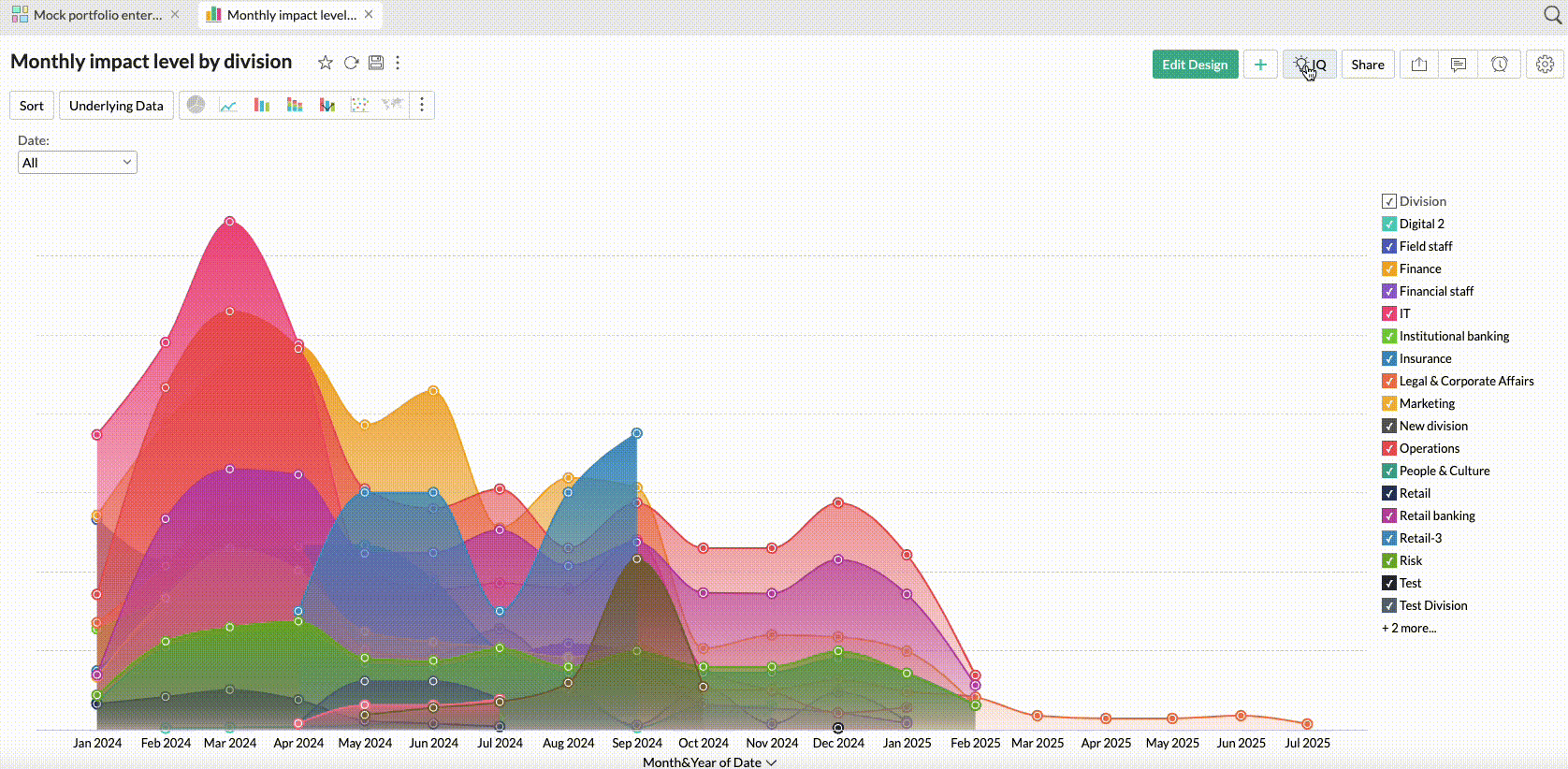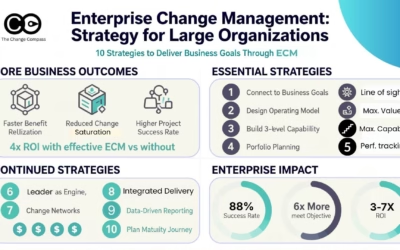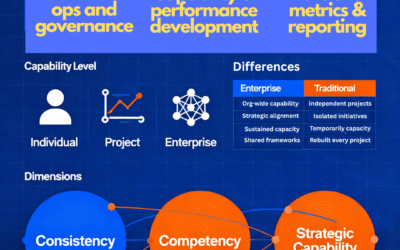In the realm of organizational change management, the concept of a Single View of Change (SVOC) has become a focal point for experienced change practitioners. This approach aims to provide a comprehensive perspective on the myriad changes occurring within an organization, thereby facilitating informed decision-making among stakeholders. However, while the SVOC is often lauded for its potential to deliver a holistic picture of change impacts, its practical implementation raises several critical questions.
The Allure of a Single View of Change
The SVOC is designed to offer change practitioners a unified lens through which to view all organizational changes—be they strategic, operational, or cultural. By consolidating information about various changes, practitioners hope to present stakeholders with a clear and coherent narrative that captures the overall impact on the organization. This is particularly valuable in environments characterized by rapid change, where stakeholders may struggle to keep track of multiple initiatives.
Concept Illustration: The Change Landscape
Imagine an organization as a bustling city. Each building represents a different initiative or project, while the streets symbolize the pathways through which information flows. In this analogy, the SVOC acts as an aerial view of the city—providing insights into how each building interacts with others and how traffic (information) moves between them. This perspective allows stakeholders to see not just individual projects but also their collective impact on the organization.

The Realities of Implementation
Despite its theoretical appeal, achieving a Single View of All Changes may be unrealistic for many organizations. In practice, organizations often grapple with hundreds of concurrent changes, some of which may be deemed too minor or insignificant to warrant inclusion in a comprehensive overview. The administrative burden associated with capturing and maintaining this data can be substantial, leading some practitioners to question whether the effort is justified. One of the few ways to achieve this is through digital means.
Example: Too Many Changes
Consider a technology firm undergoing multiple changes simultaneously: launching a new product line, implementing an agile methodology, and restructuring its sales team. Each initiative generates its own set of data points—feedback from customers, team performance metrics, and employee satisfaction surveys. If the firm attempts to capture every detail from each initiative for its SVOC, it may end up drowning in data without gaining actionable insights.
So, what information to capture, and the methodology of capturing the information is critical. Again, digital solutions can help to automate the process, which means it can be faster and easier to capture and utilise the information.
The Cost-Benefit Analysis
Organizations must weigh the benefits of creating an SVOC against the costs involved. Practitioners should ask themselves:
- What is the purpose of the SVOC?
- Who are the primary stakeholders?
- What decisions will be informed by this view?
If the answers indicate minimal value for certain changes or stakeholders, it may be more pragmatic to focus on high-impact initiatives rather than attempting to capture every nuance. However, if the organisation’s changes are mainly business-as-usual changes, then leaving this out will mean that the picture is no longer accurate.
To read more about calculating the financial benefits of managing a change portfolio check out this article.
Diverse Stakeholder Needs
Different stakeholders have varying requirements when it comes to understanding change:
- Senior Executives: Typically prefer high-level summaries that align with strategic objectives. They seek key insights into risks and mitigations without being bogged down by granular details.
- Operational Leaders: Often desire a more detailed view that includes specific impacts on daily operations and resource allocation. They may require insights down to the minute level to effectively manage their teams.
Example: Tailored Reporting
A financial services company might have different reporting needs based on stakeholder roles:
- C-Suite Executives receive monthly dashboards highlighting key performance indicators (KPIs), strategic alignment, and potential risks.
- Department Heads receive weekly reports detailing project timelines, resource allocations, and immediate operational impacts.
By tailoring reports in this manner, organizations can ensure that each stakeholder receives relevant information without overwhelming them with unnecessary details.

Visual Communication Strategies
The selection of visuals plays a crucial role in conveying the right message to stakeholders. Effective visual communication should:
Allow for Flexible Drill-Downs
Stakeholders should be able to explore data at varying levels of granularity—aggregating macro-level views or drilling down into specifics as required. For example:
- A senior executive might want an overview of change impacts across departments.
- An operations manager may wish to drill down into specific team metrics related to a new process implementation.
Facilitate Easy Switching
Different stakeholders may prefer different types of visuals. Providing options for visual switching can enhance engagement and ensure that each stakeholder receives information in their preferred format.
Example: Interactive Dashboards
Using interactive dashboards can allow stakeholders to switch between different visual representations effortlessly. They enable stakeholders to engage with data meaningfully while catering to their individual preferences:
- Heat Maps can show areas of high change impact at a glance.
- Gantt Charts can provide timelines for specific initiatives.
- Pie Charts can illustrate resource allocation across departments (if there are significant quantitative differences across each piece of the pie, or else the pie chart can be incredibly difficult to read for the audience. Check out this article to read more about this).
The Role of Technology
In today’s complex change environments, leveraging technology becomes increasingly critical. The sheer volume of data generated by ongoing changes can overwhelm traditional analysis methods. Here, artificial intelligence (AI) and live forecasting can serve as invaluable tools:
Automation
Utilizing AI can streamline data collection and analysis processes, reducing the need for extensive manual oversight. For instance:
- Natural Language Processing (NLP) algorithms can analyze employee feedback from surveys or social media platforms to gauge sentiment regarding ongoing changes.
- Automated reporting tools can generate real-time updates on project statuses without requiring manual input from team members.
Forecasting Capabilities
Live forecasting tools can provide real-time insights into potential impacts and outcomes, enabling practitioners to make proactive adjustments. For example:
- A manufacturing company might use predictive analytics to forecast how changes in supply chain management will affect production schedules.
- A healthcare organization could employ simulation models to assess how new policies will impact patient care delivery.
Example: AI Implementation in Change Management
Consider a global retail chain implementing AI-driven analytics during its digital transformation efforts:
- Data Collection: AI tools generates various change data including change impacts, communication plan, stakeholder assessment, etc.
- Analysis: Machine learning analyses the data and calls out key data observations, trends, outliers, and patterns.
- Reporting: Stakeholders receive tailored reports and dashboards showing an integrated view of what upcoming changes there are, and highlighting key risks and actions required.
This approach not only saves time but also enhances decision-making by providing actionable insights based on real-time data. However, note that currently AI will not be able to do everything. The change practitioner still needs to be able to analyse generated data and amend as needed, prioritise and select key data observations for reporting, and provider editorial oversight on what key messages should go out to the various types of stakeholders.

Understanding Stakeholder Challenges
Change practitioners must develop an acute ability to read their stakeholders’ business challenges and tailor their communications accordingly. This involves:
Tailoring Data Presentations
Adjusting the types of data shared based on stakeholder roles and responsibilities is crucial. For example:
- A project manager might need detailed timelines and resource allocations for specific initiatives.
- A finance officer may require cost-benefit analyses and benefit realisation forecast linked to adoption rates related to ongoing changes.
Customising Visuals
Selecting visuals that resonate with specific stakeholder concerns while remaining aligned with overarching organizational goals is essential for effective communication. Using storytelling techniques in presentations can help convey complex information more effectively:
- Contextualize Data: Start with a narrative that outlines why changes are necessary.
- Visualize Impact: Use graphs or infographics to illustrate projected outcomes.
- Call-to-Action: Conclude with specific actions required from stakeholders based on insights presented.
By framing data within a narrative context, practitioners can foster greater engagement and understanding among stakeholders.
Trial and error
A lot of your stakeholder may not know what they want. They are not change management experts so they may not be able to tell you exactly what the outputs look like. Often they may tell you at a high level the type of data they are after, but not the specifics.
You need to be able to carefully balance giving them something that will hit the mark, as a ‘test’ (since you may not hit the mark the first time). A bit of trial and error is required in this process as you continually test with your stakeholders what resonates and what gets their attention and drives action.
This can cause a lot of frustration and anxiety for change practitioners. After all, you are doing your very best to deliver something that is requested. But again, your audience does not know exactly what they want. There is an element of you guiding them, but also the other element of directly giving them what they are looking for.
Do note that if you don’t hit the mark too many times you may lose their interest, and therefore the opportunity to present change management data. This means that you may only have a small window of opportunity. Digital tools can help you with selecting the right visuals for the right stakeholders.

Facilitating Governance Forums
Creating spaces where stakeholders can discuss insights derived from change data allows for collaborative decision-making:
- Regular Business Meetings: Schedule governance forums where stakeholders review progress on key initiatives.
- Interactive Discussions: Encourage open dialogue about challenges faced during implementation.
- Action-Oriented Outcomes: Ensure meetings conclude with clear action items based on insights shared.
Addressing Change Fatigue
One significant challenge in managing change is addressing change fatigue, which occurs when employees feel overwhelmed by constant organizational shifts. Symptoms include:
- Apathy
- Burnout
- Increased resistance
To combat this phenomenon, organizations must implement strategies that foster resilience among employees:
Engagement Initiatives
Actively involving employees in the change process allows them to voice concerns and contribute solutions:
- Feedback Mechanisms: Implement regular surveys or focus groups where employees can share their thoughts on ongoing changes.
- Recognition Programs: Celebrate small wins related to change initiatives to maintain morale.
Transparent Communication
Maintaining open lines of communication regarding what changes are occurring and why they matter helps mitigate feelings of uncertainty among employees:
- Regular Updates: Provide frequent updates through newsletters or town hall meetings.
- Clear Messaging: Ensure messaging is consistent across all channels to avoid confusion.
Learning and Support
Providing resources that equip employees with the skills needed to navigate changes effectively is vital for reducing resistance:
- Skill Development Workshops: Offer training sessions focused on new processes or technologies being implemented.
- Mentorship Programs: Pair employees with mentors who have successfully navigated similar changes in the past.
The concept of a Single View of Change holds considerable promise for enhancing stakeholder understanding in dynamic organizational environments. However, its successful implementation hinges on recognizing the diverse needs of stakeholders and tailoring communications accordingly. By leveraging technology and fostering an environment conducive to engagement and support, change practitioners can create a more effective framework for managing organizational change. In summary, while striving for an SVOC may seem aspirational, it is essential for change practitioners to remain pragmatic about its execution—balancing ambition with realism to meet stakeholder needs effectively.
As organizations continue evolving in response to market demands and internal dynamics, understanding how best to communicate change becomes paramount. The Single View of Change offers a powerful toolset; however, it requires thoughtful consideration regarding stakeholder needs, technological integration, and ongoing adaptability in communication strategies. By embracing these principles, organizations not only enhance their capacity for effective change management but also cultivate resilience among their workforce—ultimately positioning themselves for sustained success in an ever-changing landscape.
To read more about managing a change portfolio check out our other articles.






